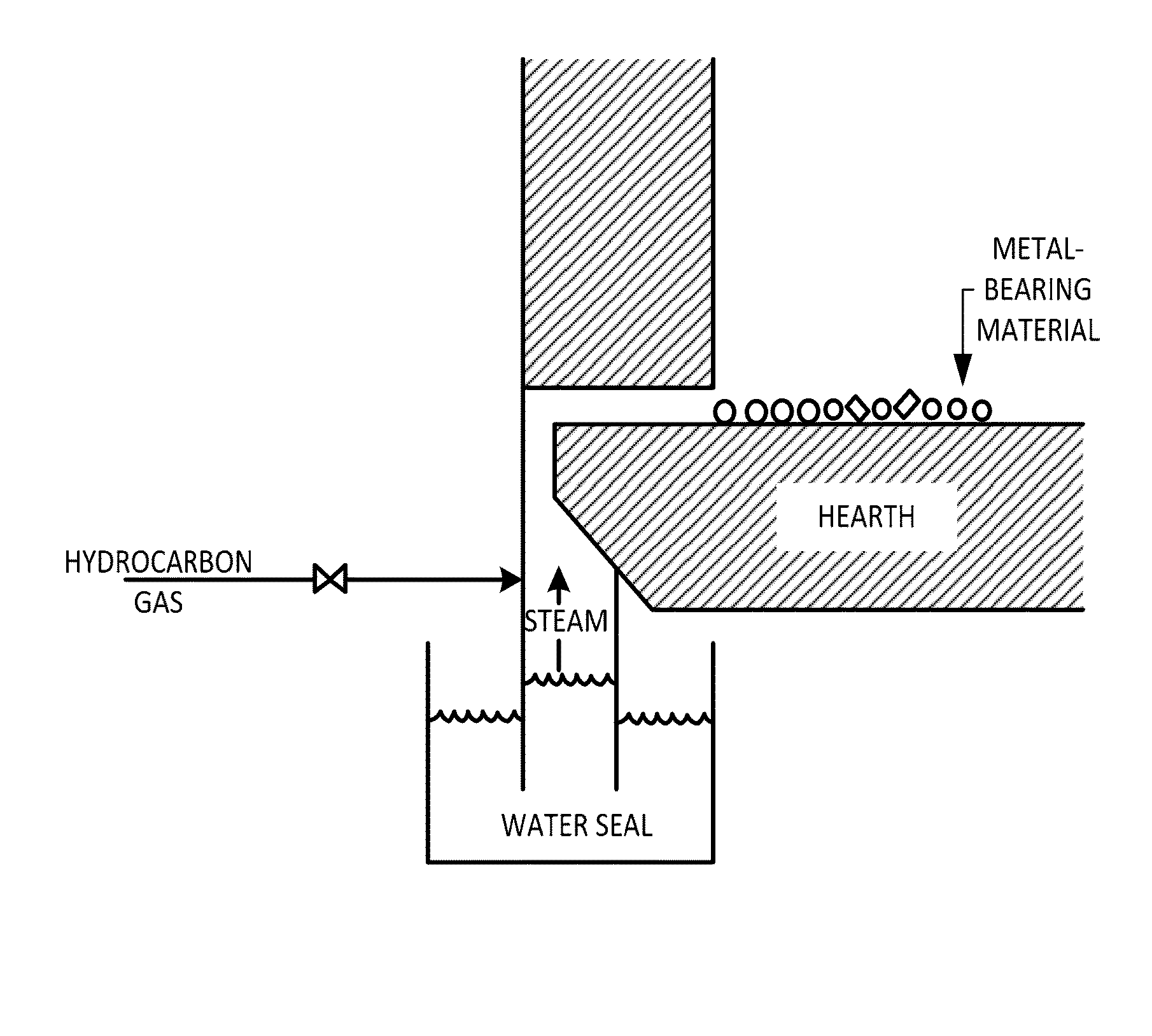Methods and systems for reducing chromium containing raw material
a technology of chrom methods, which is applied in the field of methods and systems for reducing chromium containing raw materials, can solve the problems of high fuel consumption, excessive length of rotary kilns, and reducing so as to reduce the amount of dust produced, reduce the amount of mixture, and reduce the effect of chromium reduction
- Summary
- Abstract
- Description
- Claims
- Application Information
AI Technical Summary
Benefits of technology
Problems solved by technology
Method used
Image
Examples
Embodiment Construction
[0032]FIG. 1 is a schematic diagram including a step of reducing a chromium-containing material according to U.S. Pat. No. 8,262,766. Reference numeral 1 indicates a storage container for a chromium-containing material containing chromium oxide and iron oxide (or the chromium-containing material); reference numeral 2 indicates a storage container for a carbonaceous reductant: reference numeral 3 indicates a granulator; reference numeral 4 indicates a charging path for a mixture (agglomerates) fed from the granulator 3; reference numeral 5 indicates a moving hearth furnace: reference numeral 6 indicates a transfer path for a reduced mixture (preferably, in the form of agglomerates); reference numeral 7 indicates a smelting furnace; reference numeral 8 indicates a path for recovered metal; and reference numeral 9 indicates a path for removed slag.
[0033]The chromium-containing material 1 used may be chromium ore or residues produced in the manufacturing process of ferrochromium, includ...
PUM
| Property | Measurement | Unit |
|---|---|---|
| Particle size | aaaaa | aaaaa |
| Mesh size | aaaaa | aaaaa |
| Density | aaaaa | aaaaa |
Abstract
Description
Claims
Application Information
 Login to View More
Login to View More - R&D
- Intellectual Property
- Life Sciences
- Materials
- Tech Scout
- Unparalleled Data Quality
- Higher Quality Content
- 60% Fewer Hallucinations
Browse by: Latest US Patents, China's latest patents, Technical Efficacy Thesaurus, Application Domain, Technology Topic, Popular Technical Reports.
© 2025 PatSnap. All rights reserved.Legal|Privacy policy|Modern Slavery Act Transparency Statement|Sitemap|About US| Contact US: help@patsnap.com



